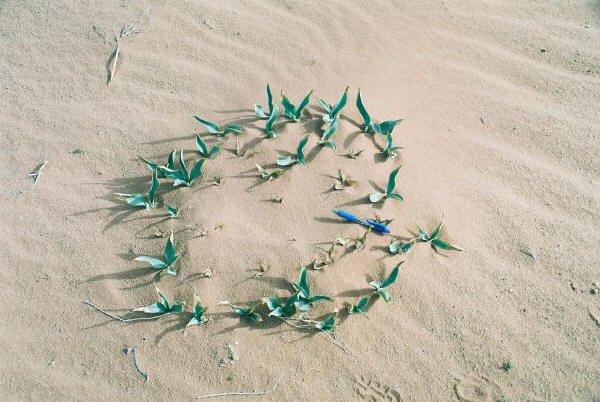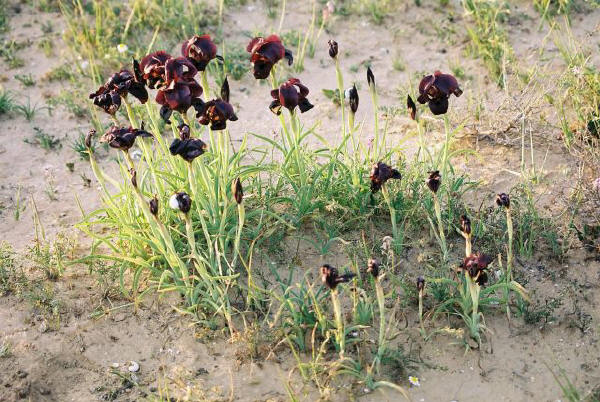

Dear Frank Rodrigue,
My name is Hezi Yizhaq and I'm a physicist in the Blaustien Institute for Desert Research located in the Negev at Southern Israel. I saw many rings of plants (attached few pics), although they are very small compare to the Creosote rings. I investigate this phenomenon with a mathematical model. According to our view the ring formation mechanism is as follows: An initial small spot of biomass starts to grow and expands outside. As the spot diameter grows the biomass in the center of the spot suffers form water stress because of intensive competition on water. Consequently central die-back of individuals that result in ring formation may be an effective way to use the limited amounts of water by the whole genet and maintain higher total biomass than if the same amount of water were homogeneously distributed. I attaches an animation (numerical simulation) which shows this process with 220 mm/y with 4 rainy months. I read in your webpage that you " wonder if the occurrence of the Creosote rings are in direct relationship to the lack of moisture in the area or the elements in the soil or a combination of the two". What do think about our idea? With parameters values which relate to Creosote, I can try to model the rings formation of this peculiar plant.
Best Regards, Hezi

